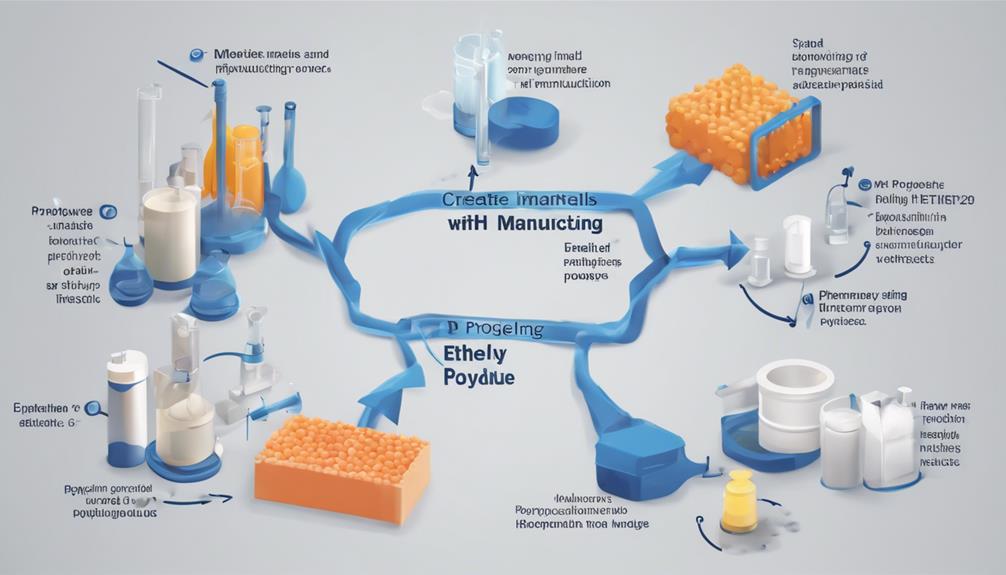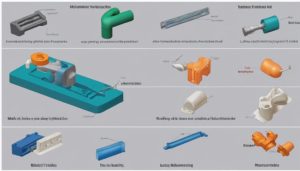Plastics production begins with extracting raw materials like crude oil, processed into monomers such as ethylene and propylene. Polymerization using catalysts forms various plastics with precise properties. Polymer powders are then created, ensuring quality through chemical bonding and catalyst influence. These powders are melted, extruded, and cut into uniform pellets for easy transportation. The pellets are then shipped to manufacturers, forming the foundation of plastic products like food packaging and auto parts. Understanding this intricate process sheds light on the critical role plastics play in modern society's versatility and functionality.
Raw Material Extraction
During the initial stages of plastic production, the extraction of raw materials begins with the utilization of crude oil as a primary source, obtained through drilling processes and further refined via fractional distillation methods. Crude oil serves as a fundamental feedstock for the production of plastics, with naphtha being an essential derivative used to manufacture monomers like ethylene and propylene.
The distillation process plays a key role in separating hydrocarbons based on their boiling points, enabling the production of synthetic plastics. Additionally, cracking, a process involving the thermal decomposition of hydrocarbons, is utilized to break down complex molecules into simpler alkenes and alkanes. These simpler components are vital for subsequent polymerization reactions in plastic manufacturing.
Through a series of controlled heating and cracking processes, the raw materials extracted from crude oil are transformed into the building blocks necessary for the creation of a wide range of plastic products.
Compounding Process
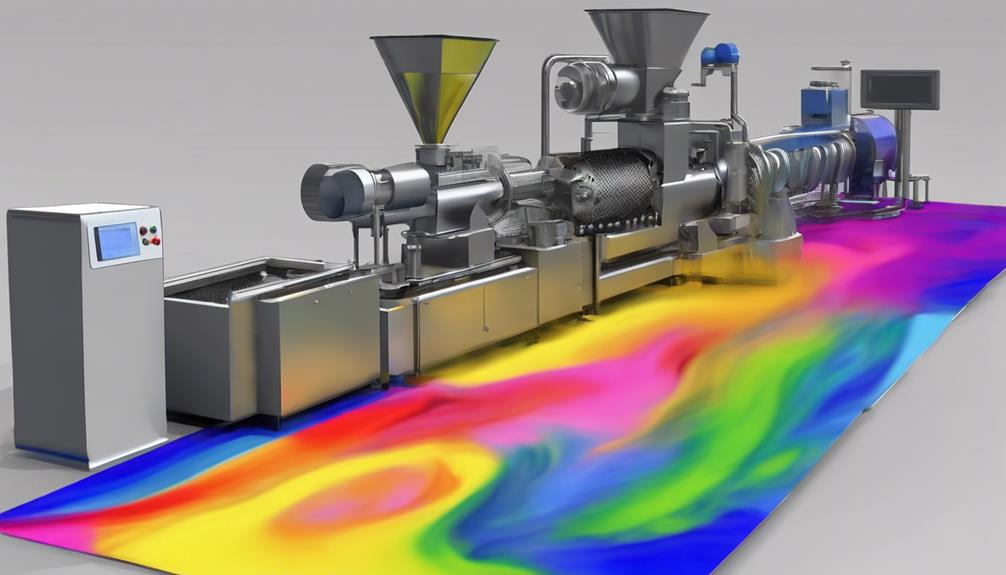
The compounding process in plastic manufacturing integrates polymer resins with additives to achieve specific properties like color, stability, or strength. This process involves methods such as dry blending, melt blending, or solution blending to guarantee a homogeneous mixture.
Through compounding, plastics can be tailored to meet precise application requirements, enhancing their overall performance and versatility.
Raw Material Selection
In the compounding process for plastics manufacturing, the selection of raw materials plays a crucial role in determining the final properties and performance of the plastic product. Raw material selection involves choosing specific polymers or additives to achieve the desired properties.
Compounding blends raw materials such as polymers, fillers, reinforcements, and additives to create the final plastic product. Different types of plastics require specific raw material combinations to meet performance requirements. This process allows for the customization of plastics by adjusting material ratios and incorporating functional additives.
Ultimately, raw material selection greatly influences the strength, flexibility, durability, and other characteristics of the final plastic product. The careful selection and combination of raw materials are essential steps in producing high-quality plastics with the desired properties.
Mixing and Blending
Building upon the foundation of raw material selection, the mixing and blending process in plastic manufacturing involves combining various additives, fillers, and colorants with base polymers to enhance the properties and functionality of the final plastic product. During compounding, additives like antioxidants, UV stabilizers, and flame retardants are carefully blended to meet specific product requirements, enhancing properties such as strength, durability, and color. This customization through compounding guarantees consistent quality and performance of plastic materials for diverse applications, including automotive parts, packaging, and medical devices.
| Components | Purpose |
|---|---|
| Additives | Enhance properties |
| Fillers | Improve strength |
| Colorants | Provide desired color |
| Base Polymers | Foundation material |
Heating and Extruding
Through the process of heating and extruding, the molten polymer is transformed into a tube shape, facilitating further processing into small pellets for enhanced manageability and uniformity.
This step in compounding manufacturing is vital for creating consistent and high-quality plastic pellets for various end products. The extruding process involves melting the polymer fluff and shaping it into a tube form before cutting it into small pellets.
Extruding the molten polymer not only allows for easy transportation and handling but also guarantees the raw plastic material is formed into a more manageable and uniform shape. This method plays a significant role in the overall manufacturing process to produce plastic pellets efficiently.
Monomer Formation
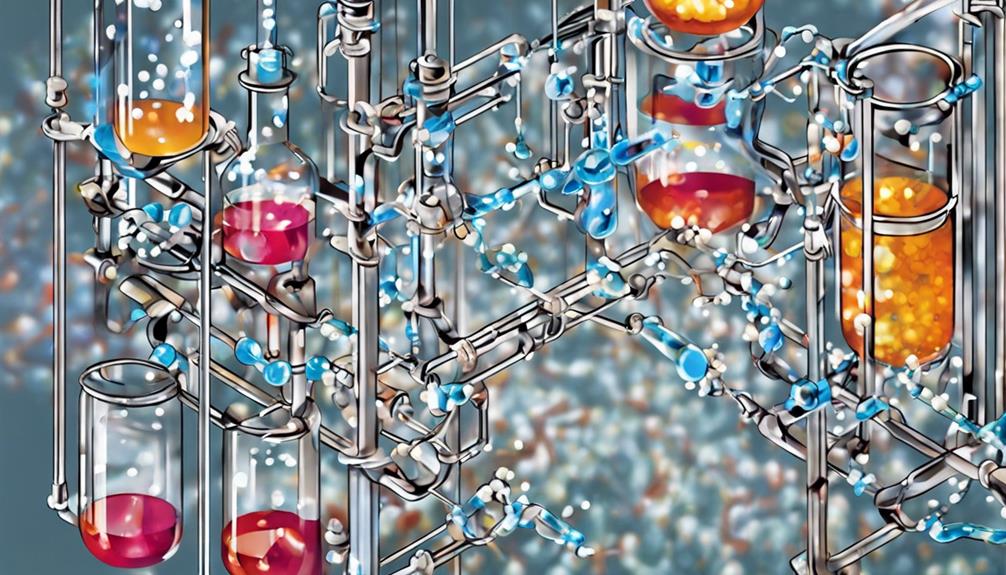
Monomer formation in the production of plastics involves the intricate process of cracking ethane and propane to yield essential building blocks like ethylene and propylene. Cracking is a chemical process that breaks down complex hydrocarbon molecules into simpler ones, such as ethylene and propylene, which are the fundamental monomers used in plastic manufacturing. These monomers serve as the starting point for the polymerization process, where they link together to form various types of plastics with distinct properties. The quality and characteristics of the final plastic products heavily rely on the specific monomers produced during this vital stage of monomer formation.
| Monomers | Source |
|---|---|
| Ethylene | Cracking of ethane |
| Propylene | Cracking of propane |
This table illustrates the direct relationship between the monomers, such as ethylene and propylene, and their respective sources through the cracking process of ethane and propane in the plastic production chain.
Polymerization With Catalyst
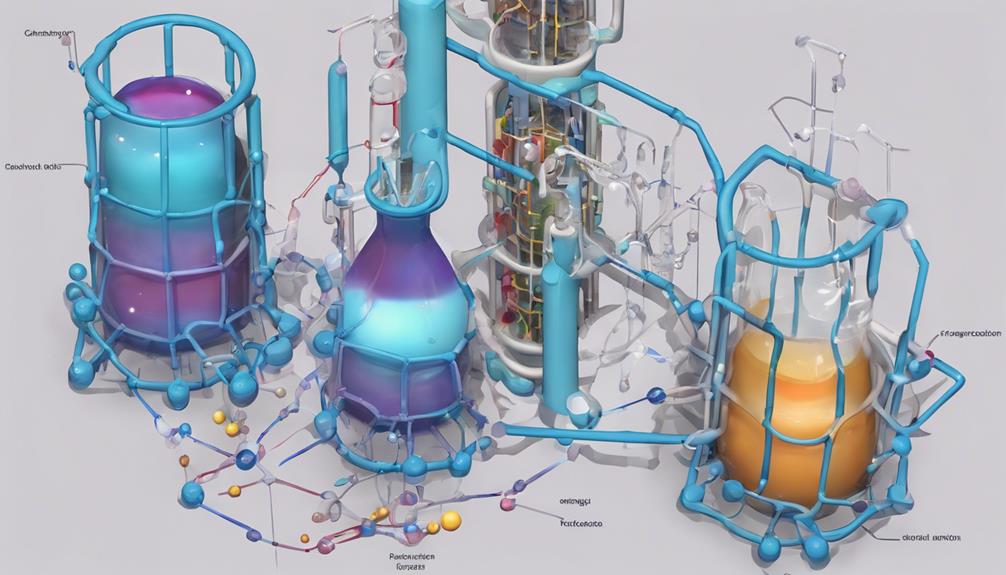
In the process of polymerization with a catalyst, the chemical bonding of monomers such as ethylene and propylene occurs to create polymers with controlled properties and characteristics. This process is essential in the production of a wide range of plastic materials with diverse applications.
- Catalysts play an important role in polymerization, facilitating the bonding of monomers to form polymers efficiently.
- The properties of the resulting polymer, including strength, flexibility, and heat resistance, can be influenced by the choice of catalyst used.
- Polymerization with a catalyst enables the controlled formation of desired polymer structures, ensuring consistency and quality in the final plastic materials produced.
Polymer Powder Creation
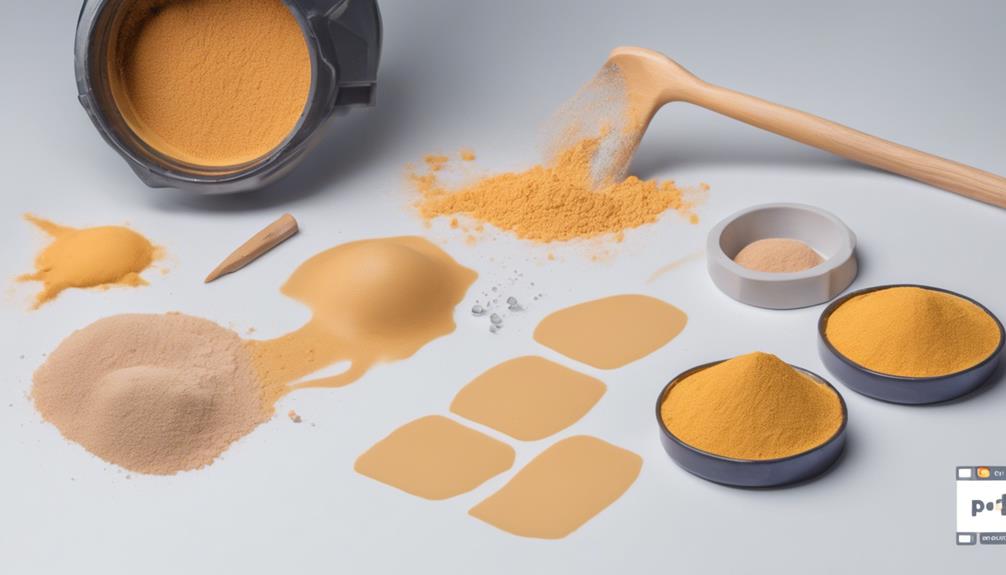
Polymer powder creation involves the chemical bonding of monomers such as ethylene and propylene into chains through a process called polymerization.
This essential step in plastic production results in the formation of long polymer chains that serve as raw material for various plastic products.
The creation of polymer powder is a foundational process in manufacturing different types of plastics for a wide range of applications.
Chemical Bond Formation
During the plastic manufacturing process, the catalyst plays a pivotal role in facilitating the chemical bond formation that transforms monomers into polymer powder.
- Monomers are chemically bonded together with a catalyst to form polymer powder.
- The catalyst helps link the monomers into long chains, creating the polymer structure.
- Polymer powder is the initial form of the plastic material before further processing.
This bonding process is essential for establishing the molecular structure of the plastic material.
The polymer powder, once formed, is later melted and shaped into pellets for convenient transportation to manufacturing facilities, where it will undergo additional processing steps.
Heating and Mixing
Through the application of high temperatures and precise mixing techniques, the polymer powder essential for plastic manufacturing is meticulously created by combining raw monomers with a catalyst. This process involves chemically bonding the monomers together to form the polymer powder. High temperatures are vital during this step as they aid in facilitating the bonding of the monomers.
Polymer powder serves as a key intermediate product in the production of various plastic items. The heating and mixing stage marks a pivotal phase in plastic manufacturing, laying the groundwork for the subsequent steps in the production process. The controlled application of heat and the careful combination of monomers and catalyst are essential in ensuring the quality and integrity of the polymer powder produced.
Pellet Formation
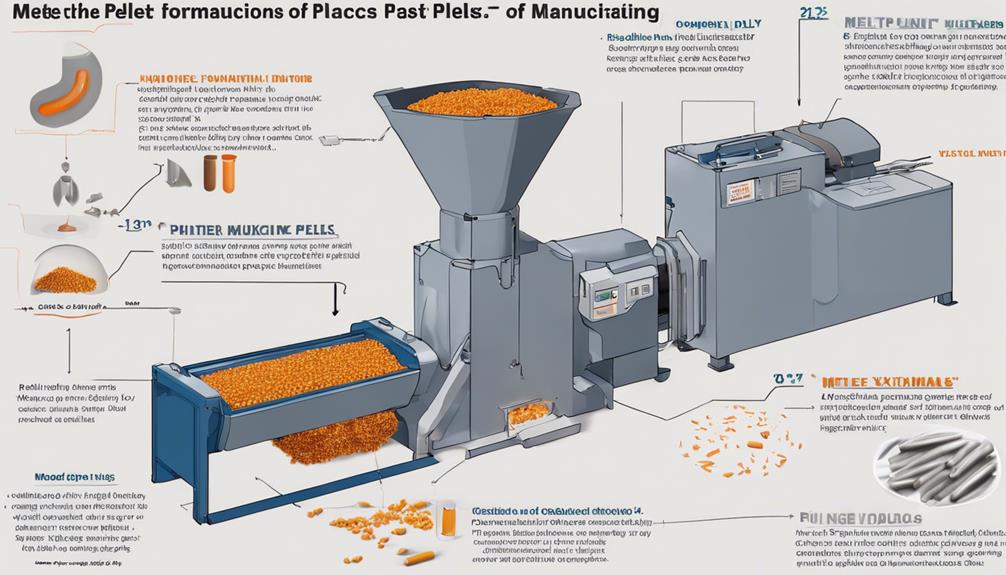
Formed through a controlled melting and extrusion process, pellets in plastic manufacturing play a crucial role in facilitating efficient handling and processing of raw materials.
The process involves melting the polymer fluff and extruding it into a tube shape, which is then cut into small cylindrical pellets. These pellets are uniform in size and shape, ensuring consistency for handling and processing procedures.
Pellet formation enables easier transportation and storage of the raw material before further processing steps. These pellets serve as the base material for molding into various plastic products, as they can be easily melted and reshaped.
The precision in creating cylindrical pellets allows for efficient efficiency in the manufacturing process, ensuring that the raw material is ready for the molding stage without additional preparation.
Distribution to Manufacturers
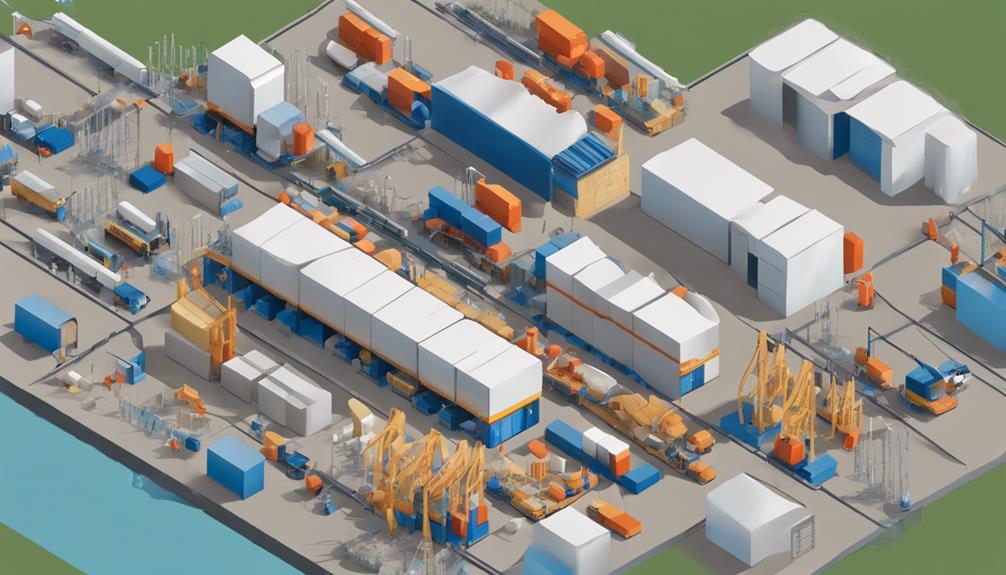
Upon completion of the pellet formation process, the plastic pellets are efficiently distributed to manufacturers in bulk quantities for subsequent processing into a diverse range of plastic products. The distribution process involves transporting the plastic pellets to various factories or facilities where manufacturers utilize them as raw materials for their production. These plastic pellets serve as the foundation for creating a multitude of plastic items across different industries. Manufacturers heavily rely on a consistent supply of high-quality plastic pellets to sustain their manufacturing operations and meet the demands of the market effectively.
| Key Points | Details |
|---|---|
| Transportation | Plastic pellets are shipped in bulk quantities to manufacturers for further processing. |
| Utilization as Raw Materials | Manufacturers use the plastic pellets to produce a wide variety of plastic products. |
| Importance of Supply | A steady supply of plastic pellets is vital for manufacturers to meet industry demands. |
Plastic Applications Overview
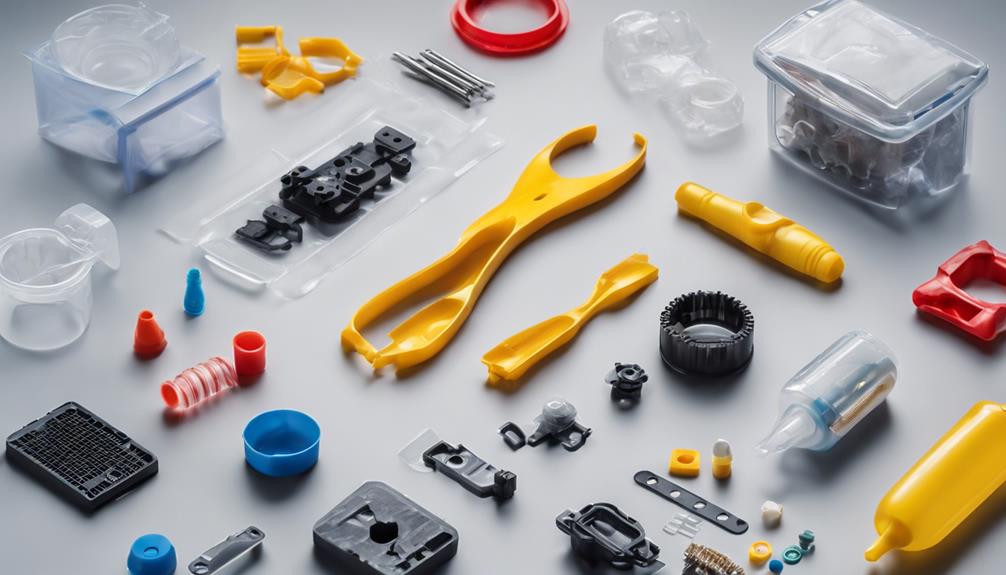
Following the distribution of plastic pellets to manufacturers for further processing, an overview of plastic applications reveals their extensive use across various industries, including packaging, medical equipment, and automotive components.
- Plastic products are extensively used in food packaging due to their versatility and cost-effectiveness.
- Auto parts made from plastic components are lightweight, durable, and offer design flexibility.
- Water bottles, a ubiquitous item in daily life, are commonly manufactured using different types of plastic such as PETE or PET plastics for their convenience and recyclability.
Plastics play an important role in modern society, providing solutions for a wide range of applications. From the convenience of food packaging to the structural components in automobiles, plastic products have become indispensable. The use of plastics in medical equipment ensures safety and hygiene standards are met, while the automotive industry benefits from the lightweight nature of plastic components. Water bottles, a symbol of convenience and portability, are made from plastics that can be recycled into various household items, contributing to sustainability efforts.
Environmental Impact Considerations
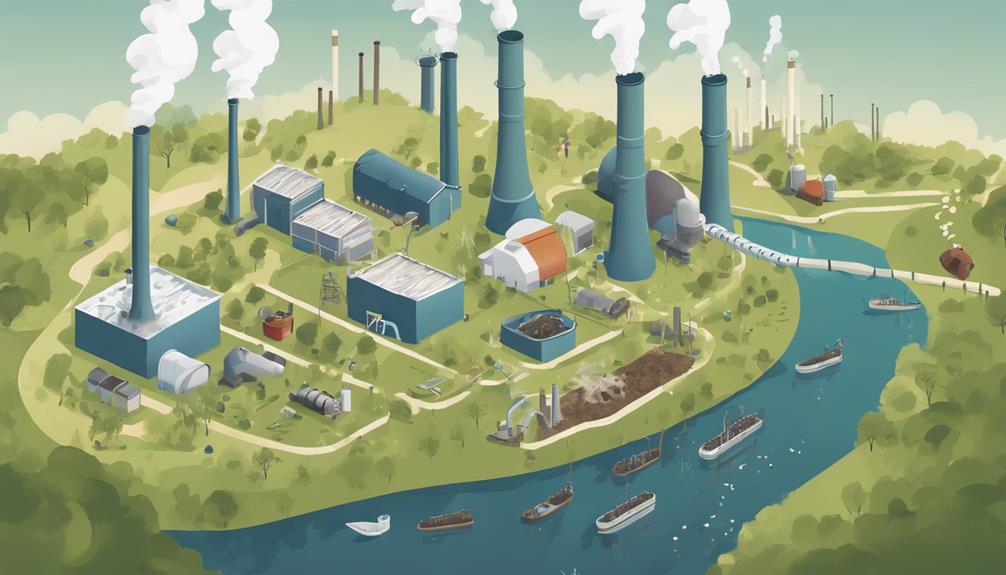
Considering the exponential growth in global plastic production and its detrimental environmental consequences, an essential analysis of the environmental impact of plastics is imperative. Plastic manufacturing heavily relies on fossil fuels, particularly ethylene and propylene derived from oil and natural gas. The extraction of these fossil fuels through methods like fracking and cracking releases toxic chemicals, contributing to air pollution and environmental degradation. Moreover, the process of plastic manufacturing consumes significant amounts of energy, further intensifying its environmental footprint.
Improper disposal practices exacerbate the environmental impact of plastics, leading to contamination of soil and water bodies. This contamination poses severe risks to ecosystems and biodiversity, threatening the delicate balance of nature. The continuous cycle of plastic production, consumption, and disposal perpetuates what is known as the Plastic Death Cycle, which not only impacts the environment but also has far-reaching consequences on climate and human health. Addressing these environmental considerations is vital to mitigate the adverse effects of plastic production on the planet.
Future of Plastic Production
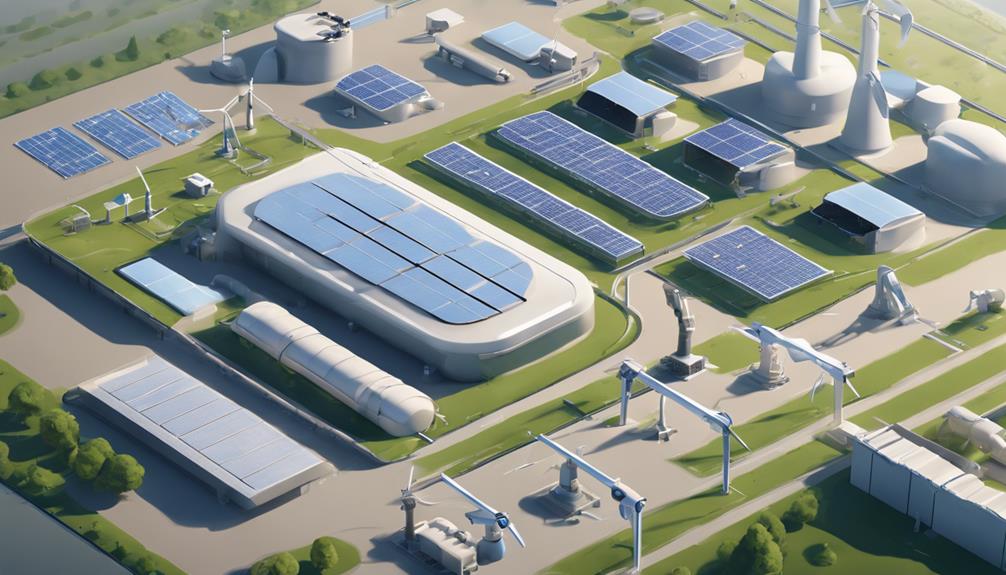
The future of plastic production is evolving towards sustainable materials and processes to minimize environmental impact. This shift includes the development of bioplastics derived from renewable sources and the integration of advanced recycling technologies to create a circular economy for plastics.
Industries are collaboratively working to enhance plastic production practices, emphasizing sustainability and eco-friendliness for a greener future.
Sustainable Plastic Alternatives
In the field of plastic production, the emergence of sustainable alternatives, such as bioplastics derived from renewable sources like plants, presents a promising avenue for reducing the reliance on conventional plastics. These eco-friendly options offer a more sustainable approach to plastic use, promoting environmental responsibility.
Key points to ponder in sustainable plastic alternatives include:
- Biodegradable plastics that decompose into natural substances
- Compostable plastics that break down without harmful byproducts
- The importance of further research and development in sustainable alternatives
While advancements in bioplastics and other sustainable materials show promise, the pressing issue of plastic waste underscores the need for continued innovation and adoption of eco-friendly practices.
Innovations in Recycling
Recent advancements in recycling technologies are revolutionizing the future of plastic production by enabling efficient separation and processing of various plastic types. Companies are actively investing in research and development to implement circular systems that promote the reusability of plastics. Advanced sorting techniques, like near-infrared spectroscopy, are enhancing plastic recycling rates and reducing contamination.
Additionally, emerging chemical recycling processes are breaking down plastics into their original building blocks, facilitating the creation of new products. The shift towards a more sustainable and circular economy in the future of plastic production involves a key focus on reusing, recycling, and repurposing plastics to minimize environmental impact.
These innovations in recycling signify a significant step towards a greener and more efficient approach to plastic production.
Frequently Asked Questions
How Plastics Are Produced?
Plastics are produced through a multi-step process involving the conversion of raw materials like natural gas or oil into monomers such as ethylene and propylene.
These monomers are then polymerized using catalysts to form polymer powder.
The polymer powder is melted, shaped into pellets, and distributed to manufacturers for a variety of applications.
This intricate process guarantees the creation of diverse plastic products like packaging, water bottles, and medical equipment.
What Are the Raw Materials for Plastic?
The raw materials essential for plastic manufacturing encompass a spectrum of resources like natural gas, oil, coal, salt, and even plant-based sources. These materials undergo extraction and refining processes to yield essential components such as naphtha from crude oil.
Natural gas is equally significant in the production of plastics. Additionally, bioplastics can be derived from plants like corn and sugarcane. The selection and treatment of these raw materials are fundamental stages in the plastic production chain.
What Are the Steps in the Plastic Making Process?
The plastic making process involves several key steps.
Raw materials like natural gas or oil are refined into compounds such as ethane and propane. These compounds are then broken down into monomers like ethylene and propylene through the application of high heat.
Monomers are linked together with a catalyst to form polymer powder, which is melted, shaped into pellets, and sent to manufacturers for further processing into various plastic products used in packaging, medical equipment, toys, and more.
How Was Plastic Originally Made?
The first synthetic plastic, Bakelite, was produced by Leo Baekeland in 1907 through the combination of phenol and formaldehyde under high heat and pressure. This groundbreaking creation marked the inception of the modern plastics industry.
Bakelite's properties, such as durability and heat resistance, revolutionized various industries and paved the way for the development of other synthetic plastics like PVC, nylon, and polystyrene, greatly impacting manufacturing and everyday products.
Conclusion
To sum up, the production of plastics involves a complex process from raw material extraction to polymerization with catalysts. Despite its convenience and versatility, the environmental impact of plastic production is a growing concern.
As technology advances, there is potential for more sustainable methods of plastic production to be developed. The future of plastic production holds promise for reducing its ecological footprint and creating a more sustainable industry.
